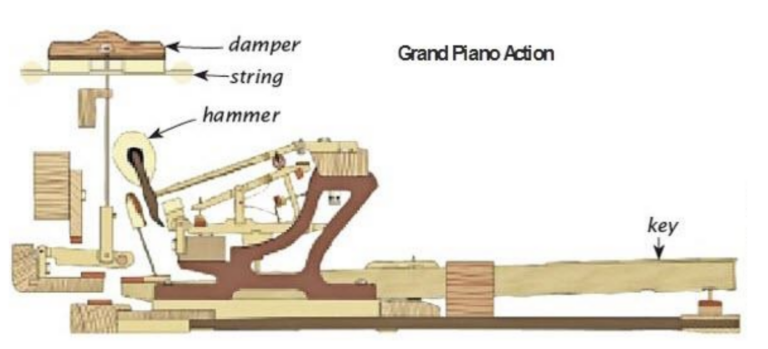What is a Pitch Raise, and why might my piano need one?
A Pitch Raise is the process of raising (or in the case of a Pitch Drop, lowering) the overall pitch of the piano in order to bring it to A-440 (International Pitch).
Why is it important that my piano be at A-440?
Pianos built since around 1930 are designed to be tuned to A-440 (where the A above Middle-C resonates at 440Hz, or cycles per second). Tuning to a lower or higher pitch will cause a piano to be unstable, and can be damaging to the instrument. Also, having your piano maintained at International Pitch allows the piano to be played with other instruments (all of which are also designed to be played at A-440) without retuning.
Why did my piano drop in pitch, or “go flat”?
The most common reason a piano’s pitch drops is because the piano has not been tuned for a long period of time. Allowing your piano to go without tuning for years allows the strings to stretch, or “relax”, resulting in the pitch dropping. The longer it has been since the last tuning, the further the pitch will need to be raised. Having your piano serviced every 6-12 months is generally considered adequate maintenance to maintain International Pitch.
Interesting fact: Each string on a piano is pulled to 220 pounds of tension, for a total of over 20 tons of tension on the piano.
Why is my Piano Technician recommending a Pitch Raise and a Tuning today?
A Pitch Raise is essentially a quick tuning intended to bring the strings “up to pitch”, thus adding tension to the strings. It is a “rough tuning” only, since the strings will stretch quickly and drop in pitch within a few minutes.
Also, the additional tension on the strings exerts a downward pressure on the soundboard, which reacts by compressing, also causing the strings to drop in pitch.
A skilled Tuner/Technician can anticipate approximately how much the strings will drop and the soundboard will compress during the Pitch
Raise, allowing a more accurate follow-up tuning to be completed. The combination of the Pitch Raise and Tuning results in the piano being at the correct pitch and “in tune” when the tuner leaves.
Will further work be required to make my piano stay in tune?Most likely, yes. The Pitch Raise & Tuning performed during the initial visit will remove the majority of the “excess elasticity” of the strings, but not all of it. Over the following few weeks the strings will continue to stretch, causing them to slowly go flat a bit more. In order to stabilize the piano, a follow-up tuning (which involves an additional standard tuning fee) will usually be required.
Regular 6 month tunings over the following year or two will complete the stabilization process, with the piano holding its tuning (and pitch) better every time.
Can’t my Tuner just tune the piano and skip the Pitch Raise?
Not recommended, since the piano would be out of tune before the tuner leaves due to the strings stretching.
What is the cost for a Pitch Raise and Tuning compared to a standard tuning visit?
Generally the cost is one-and-a-half times the normal tuning fee. This saves you money when compared to the alternative of tuning the piano twice in a 1-2 week time period, with both visits billed at full price.


